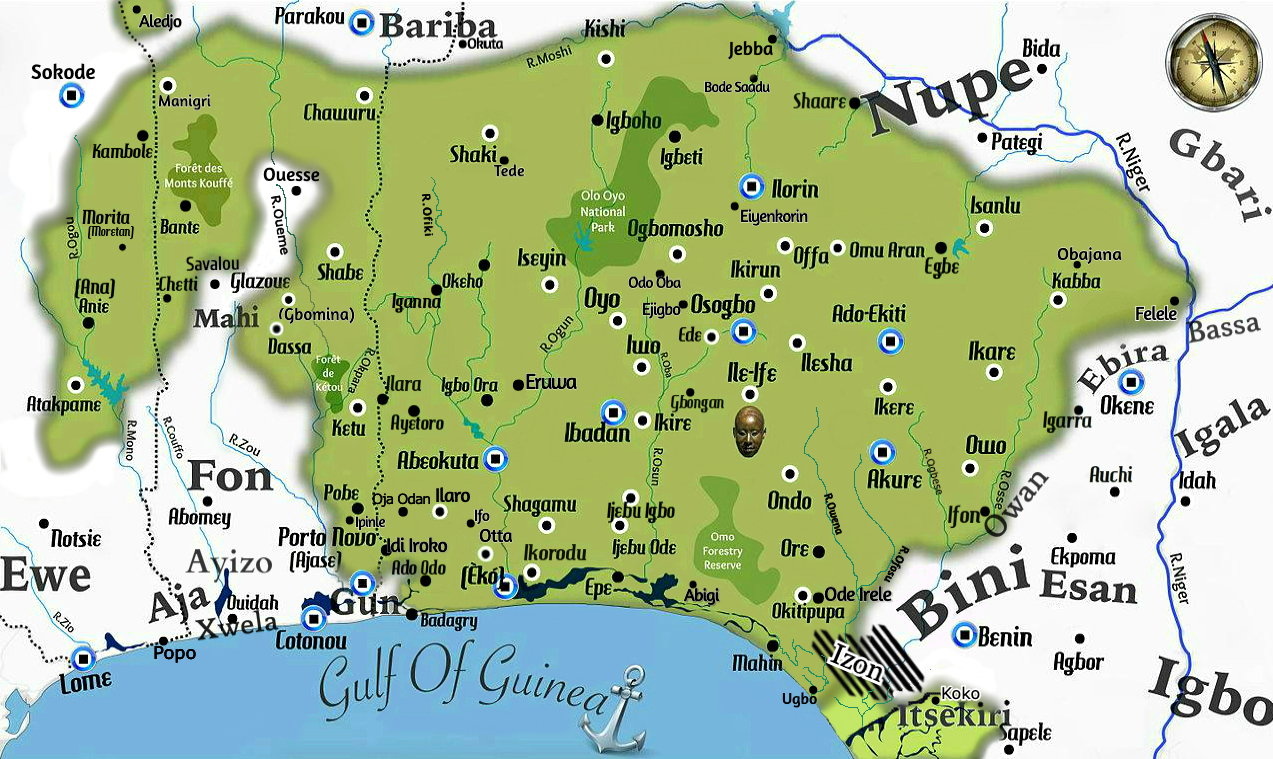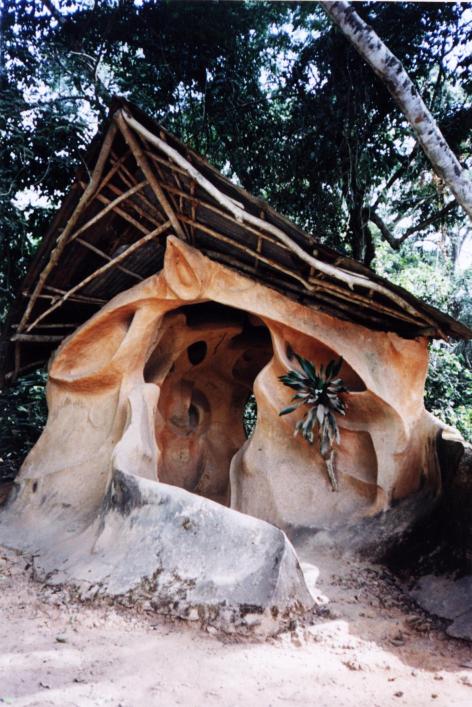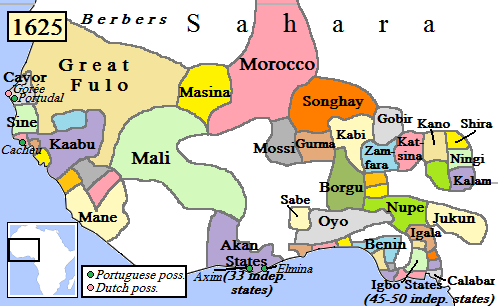|
Ifẹ
Ifẹ̀ ( yo, Ifẹ̀, also ''Ilé-Ifẹ̀'') is an ancient Yoruba city in south-western Nigeria. The city is located in present-day Osun State. Ife is about 218 kilometers northeast of Lagos with a population of over 500,000 people, which is the highest in Osun State according to population census of 2006. According to the traditions of the Yoruba religion, Ilé Ifè was founded by the order of the Supreme God Olodumare by Obatala. It then fell into the hands of his brother Oduduwa, which created enmity between the two.Bascom, ''Yoruba'', p. 10; Stride, Ifeka: "Peoples and Empires", p. 290. Oduduwa created a dynasty there, and sons and daughters of this dynasty became rulers of many other kingdoms in Yorubaland.Akinjogbin, I. A. (Hg.): ''The Cradle of a Race: Ife from the Beginning to 1980'', Lagos 1992 (The book also has chapters on the present religious situation in the town). The first Oòni of Ife is a descendant of Oduduwa, which was the 401st Orisha. The present ... [...More Info...] [...Related Items...] OR: [Wikipedia] [Google] [Baidu] |
Ooni Of Ife
The Ooni of Ile-Ife (Ọọ̀ni of Ilè-Ifẹ̀) is the traditional ruler of Ile-Ife and the spiritual head of the Yoruba people. The Ooni dynasty existed before the reign of Oduduwa which historians have argued to have been between the 7th-9th centuries A.D. After the demise of Oduduwa and Ogun’s loss of the throne, Oduduwa's support base dispersed out of Ile-Ife. Another account but not in tandem with existing evidences states that Ogun purposely sent all Oduduwa's children on different journeys to effect Yoruba territory expansion. Whatever the case, after Oduduwa’s short reign, Obatala re-emerged as the king of Ile-Ife and the throne was rotated between Obatala and Obalufon houses until the return of Oranmiyan who briefly interrupted the succession pattern. Popular history as associated Ooni Lajamisan with Oranmiyan as his son. However, Ife tradition shows that Lajamisan was indeed a descent of Oranfe lineage. Nevertheless, Lajamisan is often said to have opened ... [...More Info...] [...Related Items...] OR: [Wikipedia] [Google] [Baidu] |
Yorubaland
Yorubaland () is the homeland and cultural region of the Yoruba people in West Africa. It spans the modern-day countries of Nigeria, Togo and Benin, and covers a total land area of 142,114 km2 or about 60% of the land area of Ghana. Of this land area, 106,016 km2 (74.6%) lies within Nigeria, 18.9% in Benin, and the remaining 6.5% is in Togo. Prior to European colonization, a portion of this area was known as Yoruba country. The geo-cultural space contains an estimated 55 million people, the majority of this population being ethnic Yorubas. Geography Geo-physically, Yorubaland spreads north from the Gulf of Guinea and west from the Niger River into Benin and Togo. In the northern section, Yorubaland begins in the suburbs just west of Lokoja and continues unbroken up to the Ogooué River tributary of the Mono River in Togo, a distance of around 610 km. In the south, it begins in an area just west of the Benin and Osse (Ovia) river occupied by the Ilaje Yorubas a ... [...More Info...] [...Related Items...] OR: [Wikipedia] [Google] [Baidu] |
Yoruba People
The Yoruba people (, , ) are a West African ethnic group that mainly inhabit parts of Nigeria, Benin, and Togo. The areas of these countries primarily inhabited by Yoruba are often collectively referred to as Yorubaland. The Yoruba constitute more than 42 million people in Africa, are a few hundred thousand outside the continent, and bear further representation among members of the African diaspora. The vast majority of the Yoruba population is today within the country of Nigeria, where they make up 21% of the country's population according to CIA estimations, making them one of the largest ethnic groups in Africa. Most Yoruba people speak the Yoruba language, which is the Niger-Congo language with the largest number of native or L1 speakers. In Africa, the Yoruba are contiguous with the Yoruboid Itsekiri to the south-east in the northwest Niger Delta, Bariba to the northwest in Benin and Nigeria, the Nupe to the north, and the Ebira to the northeast in central Nigeria. ... [...More Info...] [...Related Items...] OR: [Wikipedia] [Google] [Baidu] |
Osun State
Osun State (; yo, Ìpínlẹ̀ Ọ̀ṣun), occasionally known as the State of Osun by the state government, is a state in southwestern Nigeria; bounded to the east by Ekiti and Ondo states, to the north by Kwara State, to the south by Ogun State and to the west by Oyo State. Named for the River Osun—a vital river which flows through the state—the state was formed from the southeast of Oyo State on 27 August 1991 and has its capital as the city of Osogbo. Of the 36 states of Nigeria, Osun is the ninth smallest in area and nineteenth most populous with an estimated population of about 4.7 million as of 2016. Geographically, the state is divided between the Nigerian lowland forests in most of the state and the drier Guinean forest–savanna mosaic in the north. The major geographical features are rivers including the state's namesake, the River Osun which bisects the state's interior before forming much of the state's southwestern border with Oyo State and flowing sout ... [...More Info...] [...Related Items...] OR: [Wikipedia] [Google] [Baidu] |
Adeyeye Enitan Ogunwusi
Oba Adeyeye Enitan Ogunwusi; (''Ọjájá II'') (born 17 October 1974) is the 51st and current Ooni of Ife. He is the traditional ruler/monarch of the Yoruba kingdom of Ile-Ife. He ascended to the throne of his forebearers in 2015 succeeding the deceased Oba Okunade Sijuwade who was the 50th Ooni of Ife. Ancestry Ọba Ọjájá II was born Prince Adeyeye Enitan of Giesi, one of the four royal families of the House of Oranmiyan. His paternal grandfather was Prince Joseph Olagbaju Adewole Ogunwusi, whose grandfather was Ọba Ọ̀ráyẹ̀gbà (also known as Ooni Orarigba or Orasigba) Ọjájá I, who was the 44th Ooni of Ife and ruled from 1878 to 1880. Through him, he is a direct descendant of Ooni Agbedegbede, who was a descendant of Ooni Giesi, (the progenitor of the Giesi royal House), and thus a descendant of Ọọni Lajodogun. Lajodogun was a son of Ọọni Lajamisan (or Lajemisin), who was a grandson of the legendary founder of the Oyo Empire Oranmiyan. ... [...More Info...] [...Related Items...] OR: [Wikipedia] [Google] [Baidu] |
Kingdom Of Benin
The Kingdom of Benin, also known as the Edo Kingdom, or the Benin Empire ( Bini: '''') was a kingdom within what is now southern Nigeria. It has no historical relation to the modern republic of Benin, which was known as Dahomey from the 17th century until 1975. The Kingdom of Benin's capital was Edo, now known as Benin City in Edo State, Nigeria. The Benin Kingdom was "one of the oldest and most developed states in the coastal hinterland of West Africa". It grew out of the previous Edo Kingdom of Igodomigodo around the 11th century AD, and lasted until it was annexed by the British Empire in 1897. Oral traditions The original people and founders of the Benin Kingdom, the Edo people, were initially ruled by the Ogiso (Kings of the Sky) who called their land Igodomigodo. The first Ogiso (Ogiso Igodo), wielded much influence and gained popularity as a good ruler. He died after a long reign and was succeeded by Ere, his eldest son. In the 12th century, a great palace intrigue erup ... [...More Info...] [...Related Items...] OR: [Wikipedia] [Google] [Baidu] |
Oyo Empire
The Oyo Empire was a powerful Yoruba empire of West Africa made up of parts of present-day eastern Benin and western Nigeria (including Southwest zone and the western half of Northcentral zone). It grew to become the largest Yoruba-speaking state and rose through the outstanding organizational and administrative skills of the Yoruba people, wealth gained from trade, and a powerful cavalry. The Oyo Empire was one of the most politically important states in the entirety of Western Africa from the mid-17th to the late 18th century, and held sway not only over most of the other kingdoms in Yorubaland, but also over nearby African states, notably the Fon Kingdom of Dahomey in the modern Republic of Benin on its west. History Legend of origin The origins of the Oyo Empire lie with Oranyan (also known as Oranmiyan), the last prince of the Yoruba Kingdom of Ile-Ife ( Ife). Oranmiyan made an agreement with his brother to launch a punitive raid on their northern neighbors for ins ... [...More Info...] [...Related Items...] OR: [Wikipedia] [Google] [Baidu] |
Festival
A festival is an event ordinarily celebrated by a community and centering on some characteristic aspect or aspects of that community and its religion or cultures. It is often marked as a local or national holiday, mela, or eid. A festival constitutes typical cases of glocalization, as well as the high culture-low culture interrelationship. Next to religion and folklore, a significant origin is agricultural. Food is such a vital resource that many festivals are associated with harvest time. Religious commemoration and thanksgiving for good harvests are blended in events that take place in autumn, such as Halloween in the northern hemisphere and Easter in the southern. Festivals often serve to fulfill specific communal purposes, especially in regard to commemoration or thanking to the gods, goddesses or saints: they are called patronal festivals. They may also provide entertainment, which was particularly important to local communities before the advent of mass-produced enter ... [...More Info...] [...Related Items...] OR: [Wikipedia] [Google] [Baidu] |
Savè
Savè is a city in Benin, lying on the Cotonou-Parakou railway and the main north–south road. It is known for its local boulders, popular with climbers. "Savè" is from the historical Yoruba name Ṣábẹ̀ẹ́. The commune covers an area of 2228 square kilometres and as of 2002 had a population of 67,753 people. History On the 30th of January 1894 there was a treaty for French protectorate status between Brigadier General Alfred-Amédée Dodds, the commander superior of French establishments in Benin and Oba Akenmu, King of the Confederation of Nago Tchabè. Subsequently in 1903, due to disagreements, the Oba (Onichabe) tried to shift the Anglo-French border delineation westwards from the Okpara river to the Weme river in order to integrate the Shabe territory beginning at the north of Tchatchou into the same colonial authority as that of the Oyo and the Egba to the east under British Nigeria Colonial Nigeria was ruled by the British Empire from the mid-nineteen ... [...More Info...] [...Related Items...] OR: [Wikipedia] [Google] [Baidu] |
Ketu (Benin)
Ketu is a historical region in what is now the Republic of Benin, in the area of the town of Kétou (Ketu). It is one of the oldest capitals of the Yoruba-speaking people, tracing its establishment to a settlement founded by a descendant of Oduduwa, also known as Odudua, Oòdua and Eleduwa. The regents of the town were traditionally styled "Alaketu", and are related directly to Ile-Ife in present-day Nigeria. Ketu is one of the sixteen original kingdoms established by the children of Oduduwa in Oyo mythic history, though this ancient pedigree has been somewhat neglected in contemporary Yoruba historical research, which tends to focus on communities within Nigeria. The exact status of Ketu within the Oyo empire however is contested. Oyo sources claim Ketu as a dependency with claims that the Ketu paid an annual tribute and that its ruler attended the Bere festival in Oyo. In any case, there is no doubt that Ketu and Oyo maintained friendly relations largely due to their historical ... [...More Info...] [...Related Items...] OR: [Wikipedia] [Google] [Baidu] |






